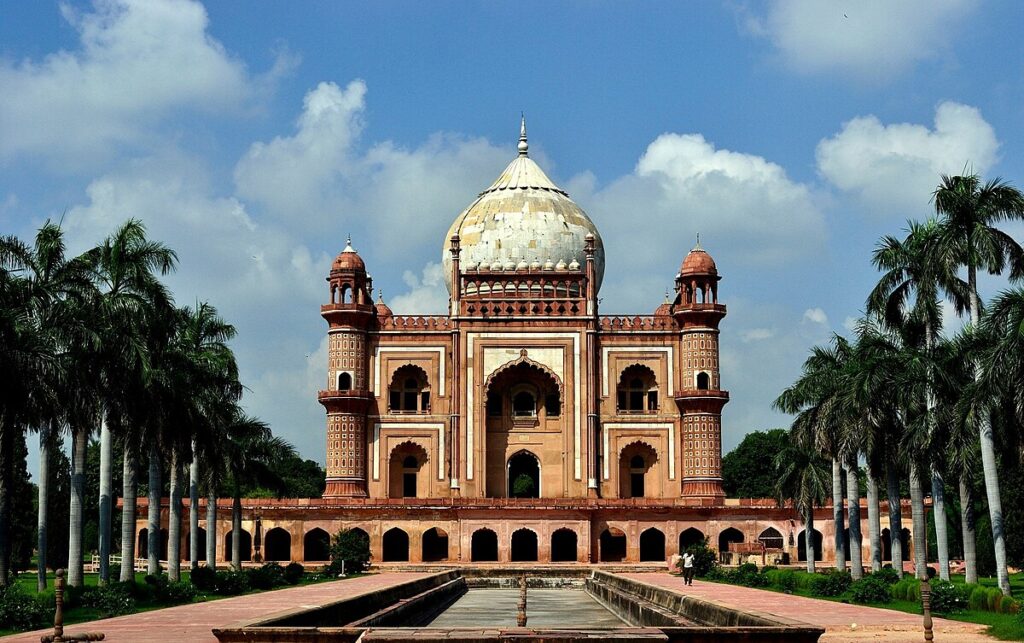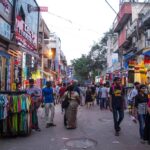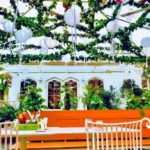Delhi is a city where history breathes through its walls, streets, and monuments. While the grandeur of the Red Fort or the elegance of Humayun’s Tomb attracts millions, Safdarjung Tomb quietly stands as a testament to the last phase of Mughal architecture.
Built in 1754 as a mausoleum for Nawab Safdarjung, this monument is often overlooked by tourists, yet it holds a fascinating charm — a mix of Persian influence, fading Mughal opulence, and the whispers of Delhi’s changing political tides.
In this blog, we’ll explore its history, architecture, legends, visitor tips, and why you should add it to your Delhi itinerary.
Historical Background – A Monument in Decline of an Empire
Safdarjung Tomb was commissioned by Shuja-ud-Daula, the son of Safdarjung, who served as the Prime Minister (Wazir) of the Mughal Empire under Emperor Ahmad Shah Bahadur.
By the mid-18th century, the Mughal Empire was a shadow of its former glory. The grandeur of Shah Jahan’s era had faded, and the treasury was nearly empty. Yet, Shuja-ud-Daula wanted to immortalize his father’s memory with a monument befitting his stature.
- Year of construction: 1754
- Commissioned by: Shuja-ud-Daula
- Architectural style: Late Mughal with Persian influence
- Historical context: Decline of the Mughal Empire and rise of regional powers
Interestingly, some historians believe that materials from older Mughal structures were reused in its construction, hinting at the economic difficulties of the time.
Architectural Splendor – Persian Grandeur Meets Mughal Decline
Safdarjung Tomb is often called the “last flicker in the lamp of Mughal architecture”. It follows the charbagh (four-part garden) layout, similar to Humayun’s Tomb, but the proportions feel slightly less balanced — a sign of the empire’s waning resources.
Key Architectural Features:
- Main Dome: A massive bulbous dome sits atop the central chamber, a hallmark of Mughal design.
- Gateway: The imposing sandstone and marble entrance creates an impressive first look.
- Use of Materials: Red sandstone with white marble inlay, though the quality is not as refined as earlier Mughal works.
- Decorative Work: Intricate floral motifs, lattice screens (jali work), and Persian-style arches.
- Tomb Chambers: The main mausoleum houses Safdarjung’s remains, while surrounding chambers add symmetry.
The garden’s layout is divided into four quadrants with water channels that once flowed into reflecting pools, adding to the monument’s serenity.
Legends and Anecdotes – Whispers from the Past
Like many Mughal-era monuments, Safdarjung Tomb carries its share of stories.
- Reuse of Older Monuments: Local lore suggests that parts of older Mughal structures, possibly from Tughlaq-era ruins, were used here.
- A Political Symbol: Built during a time when the Mughals were losing power, some historians see it as a desperate attempt to cling to past glory.
- Resting Place of a Nobleman: Safdarjung was known for his diplomacy and wealth, but also for navigating the treacherous politics of the Mughal court.
Visiting Safdarjung Tomb – A Peaceful Escape in Delhi
Unlike the crowded Red Fort or India Gate, Safdarjung Tomb offers a peaceful, almost meditative experience.
Location:
Aurobindo Marg, near Lodhi Road, South Delhi
Nearest Metro:
- Jor Bagh Metro Station (Yellow Line) – around 500 meters away
Timings:
- Daily: Sunrise to sunset
Entry Fee:
- Indian Citizens: ₹25
- Foreign Tourists: ₹300
- Children below 15 years: Free
Best Time to Visit:
- Winter months (Nov–Feb): Pleasant weather for photography and exploration
- Early mornings or late afternoons for softer light and fewer visitors
Photography Tips – Capturing the Monument’s Charm
- Golden Hour: Visit during early morning or late afternoon for perfect lighting.
- Symmetry Shots: Stand at the main gate to capture the tomb framed in the archway.
- Close-up Details: Highlight floral motifs, marble inlays, and lattice screens.
- Garden Perspectives: Use the long water channels for leading lines in your photos.
Nearby Attractions – Make It a Heritage Walk
If you’re visiting Safdarjung Tomb, you can easily explore nearby historical spots:
- Lodhi Gardens (2 km) – Beautiful park with 15th-century tombs
- Humayun’s Tomb (3.5 km) – UNESCO World Heritage Site
- Khan Market (2.5 km) – Upscale shopping and cafes
- India Gate (4 km) – Iconic war memorial
Why Visit Safdarjung Tomb Today?
While it may not match the perfection of Humayun’s Tomb or the grand scale of the Red Fort, Safdarjung Tomb offers something rare — a chance to walk through the final chapter of Mughal architecture without the rush of large crowds.
It’s a place where you can slow down, observe details, and reflect on Delhi’s layered history. The balance of beauty and melancholy here makes it one of the city’s most poetic monuments.
Travel Tip – Combine History with Relaxation
Bring a picnic mat and sit in the gardens after exploring. It’s also a great spot for sketching or reading under the shade of old trees, with the tomb in the backdrop.
Call-to-Action:
Next time you’re in Delhi, step away from the usual tourist spots and give Safdarjung Tomb a visit. You might just discover a quieter, more contemplative side of the city.
Nearest Metro: Jor Bagh (Yellow Line)
Nearest Bus Stop: Safdarjung Airport Bus Stop



